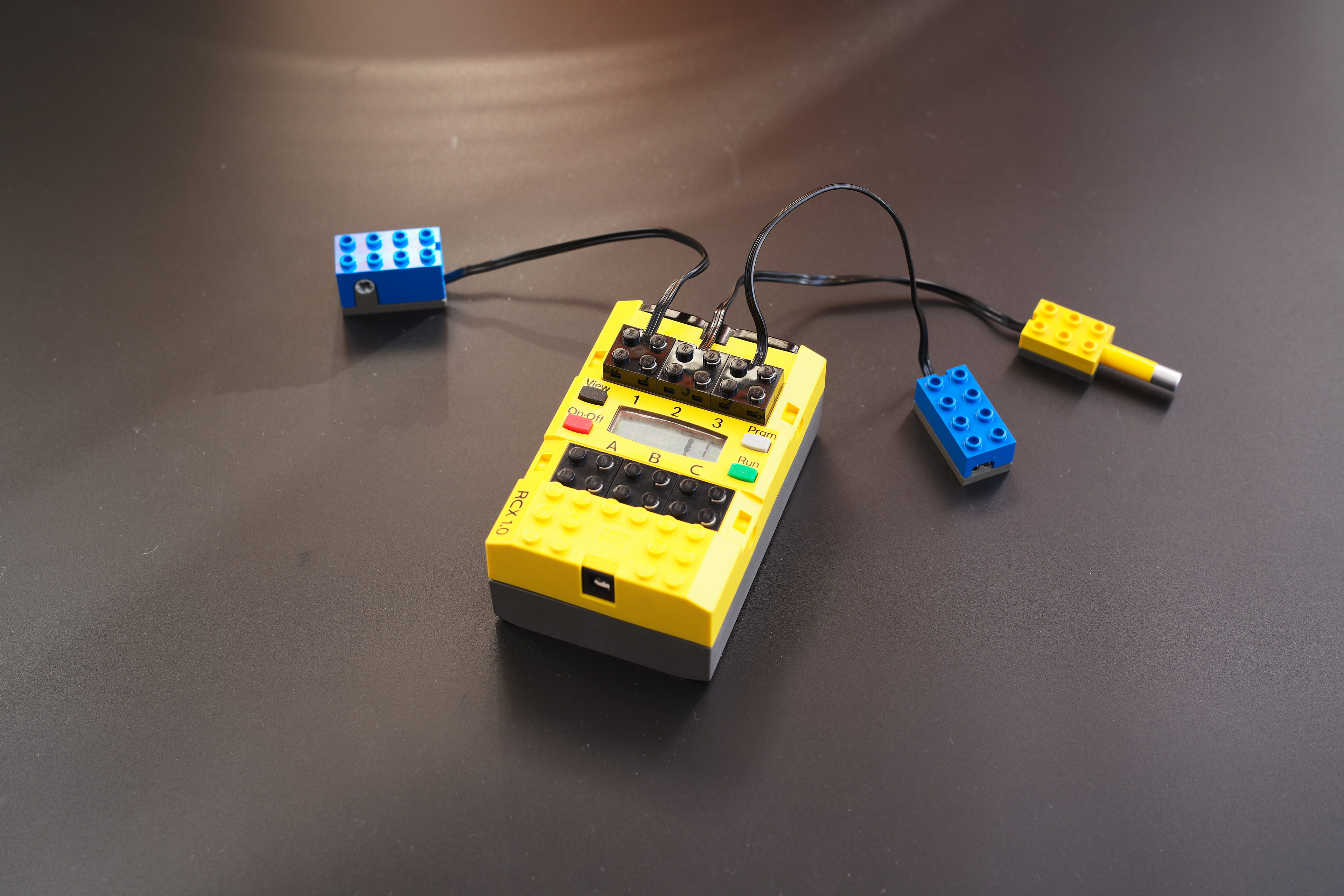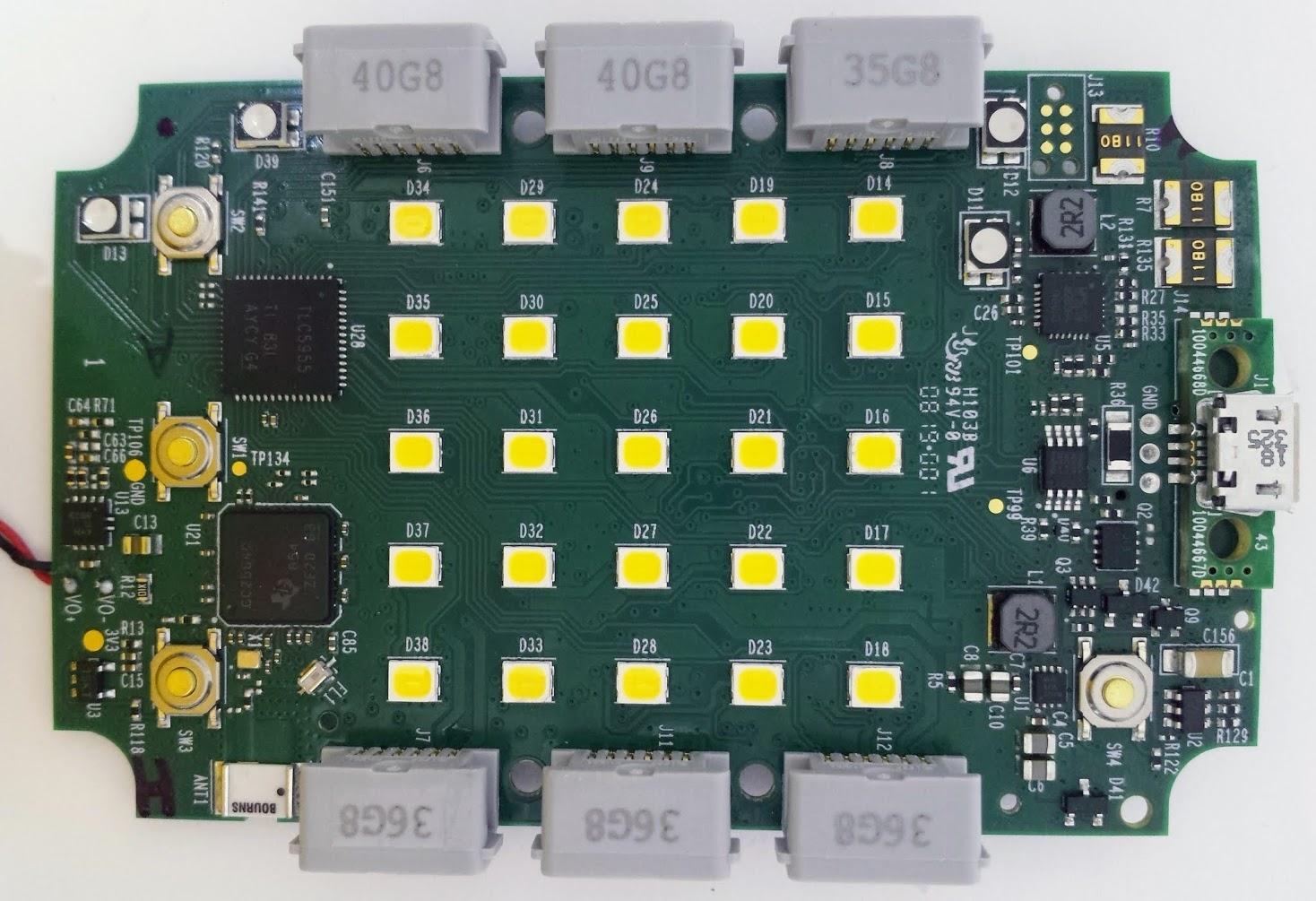Controller LOG
LEGO Mindstorms Log and Camellia Controller Log
Education is the Future
March 26th, 2023 by Camellia
LEGO Mindstorms
RCX
In 1998, the first generation of Lego MINDSTORMS was built around a brick known as the RCX (Robotic Command eXplorers). It contains an 8-bit Hitachi H8 microcontroller as its CPU, 32 kB of RAM, and 32 kB of ROM. The Hitachi H8 (now Renesas) is the microcontroller serving as the main processor on board the RCX. NQC is one way of compiling code for the H8.
H8 is the name of a large family of 8-bit, 16-bit and 32-bit microcontrollers made by Renesas Technology, originating in the early 1990s within Hitachi Semiconductor.

The brick is programmed by uploading a program from a Windows or Mac computer to the brick's ROM via a special IR (infrared) interface. Two or more RCX bricks can communicate with each other through the IR interface, enabling inter-brick cooperation or competition.

This original MINDSTORMS Robotics Invention System kit contained two motors, two touch sensors, and one light sensor. There is also an LCD that can show the battery level, status of the input/output ports, which program is selected or running, and other information. LEGO Mindstorms may be used to build a model of an embedded system with computer-controlled electromechanical parts. Many kinds of real-life embedded systems, from elevator controllers to industrial robots, may be modelled using MINDSTORMS.
The hardware and software roots of the Mindstorms Robotics Invention System kit go back to the programmable brick created at the MIT Media Lab. This brick was programmed in Brick Logo. The first visual programming environment was called LEGOsheets since it was created by the University of Colorado in 1994 based on AgentSheets. Lego Mindstorms' programming is command box programming, rather than code programming. RCX Code and ROBOLAB (based on LabVIEW and developed at Tufts University). In addition, the shipped software can be replaced with third-party firmware and/or programming languages, including some of the most popular ones used by professionals in the embedded systems industry, like Java and C.
NXT
Lego Mindstorms NXT is a programmable robotics kit released by Lego on August 2, 2006. It comes with the NXT-G programming software, or optionally LabVIEW for Lego Mindstorms. A variety of unofficial languages exist, such as NXC, NBC, leJOS NXJ, and RobotC. The second generation of the set, the Lego Mindstorms NXT 2.0, was released on August 1, 2009.

The NXT actually has 3 microcontrollers making everything tick along.
(1) The little circuit board at the top of the picture is the Bluetooth to the serial module. The leftmost, rectangular chip is the memory with Bluetooth control software from Cambridge Silicon Radio. The square chip is the CSR Bluecore 4 microcontroller and radio hardware BC417143BQN, supporting Bluetooth v2.0 and EDR. The gold zig-zag trace at the top right hand corner is presumably the antenna. (Item 2 in below picture)
(2) The main 32-bit ARM controller that runs your programs, is an Atmel AT91SAM7S256. This includes Flash memory/file system, RAM and the USB Device interface. (Item 1 in below picture)
(3) An 8-bit Atmel ATMEGA48 drives the PWM for the motor control, but the rotation sensors feedback to the AT91SAM7s256. (Item 3 in below picture)
It can take input from up to four sensors and control up to three motors, via a modified version of RJ12 cables. It has a 100×64pixel monochrome LCD and four buttons that can be used to navigate a user interface using hierarchical menus. It has a 32-bit ARM7TDMI-core Atmel AT91SAM7S256 microcontroller with 256 kB of FLASH memory and 64 KB of RAM, plus an 8-bit Atmel AVR ATmega48 microcontroller, and Bluetooth support. It also has a speaker and can play sound files at sampling rates up to 8 kHz.

Courtesy of Tony Naggs
EV3
LEGO Mindstorms EV3 is the third generation robotics kit in LEGO's Mindstorms line. The "EV" designation refers to the "evolution" of the Mindstorms product line.

EV3 has a more powerful ARM9 CPU running Linux, the Texas Instruments AM1808 ARM-9 Sitara Processor with 16 MB Flash and 64 kB RAM.
A USB connector and Micro SD slot (up to 32GB) are new to the EV3.
EV3 could take input from up to five types of sensors, and two types of servo motors, via a modified version of RJ12 6P6C cables. It has a 178×1128 pixel LCD.

Robot Inventor
Robot Inventor, the latest LEGO® MINDSTORMS® evolution, is released in 2020.
The main CPU is an STM32F413. It includes 1M of flash and 320k of RAM and the ARM Cortex M4 core can be clocked up to 100MHz. In addition to the 1M of embedded flash, there's a Winbond W25Q256JV providing an additional 32MB for program and data storage. Bluetooth connectivity is provided by the TI CC2564C.

The 25 LED grid is driven by a TI TLC5955 (48 channel PWM LED driver). This part also drives the other 4 surface mount LEDs on the board.
The 6 motor outputs are driven by a trio of LB1836 dual motor drivers.


Overall, this is similar in architecture (ARM-based, identical output drivers, etc) to the other Powered Up hubs. It is significantly more powerful in terms of horsepower and storage thanks to the 32MB flash chip and higher clock frequency (100MHz here vs 48MHz for Boost for example).
| Robot Inventor/Spike Prime | EV3 | NXT | RCX | |
| Display | 5x5 LEDs | 178×128 pixel Monochrome LCD |
100×64 pixel Monochrome LCD |
Segmented Monochrome LCD |
| Main Processor | STM32F413 (ARM Cortex M4F) @100 MHz |
TI Sitara AM1808 (ARM926EJ-S core) @300 MHz |
Atmel AT91SAM7S256 (ARM7TDMI core) @48 MHz |
Hitachi H8/300 @16 MHz |
| Main Memory | 320 kB RAM 1 MB Flash 32 MB Flash (secondary chip) |
64 kB RAM 16 MB Flash Micro SDHC Slot |
64 kB RAM 256 kB Flash |
32 kB RAM 16 kB ROM |
| USB Host Port | No | |||
| Wi-Fi | No | Yes | No | No |
| Bluetooth | Yes | Yes | Yes | No |
| To Computer | Micro USB | Mini USB | Type-B USB | Infrared |
Camellia Controller
Since 2016, Camellia has focused on robots and their controller design with educational instruction.
Camellia Controller has two product series, one is ARM with 32 bits controller, and the other is MCU with 8 bits controller. The main target is servo motor control and robot design.
More than LEGO Mindstorm, Camellia Controller could also control the steering servo motor, drive LED and LCD.

More importantly, Camellia Controller supports the Internet of Things via MQTT, BLE and Wi-Fi technology.
With Camellia, you will not only design your robot but also know how to design your robot both from hardware and software.
2016 - Camellia ARM 1.0

2017 - Camellia ARM 2.0

2017 - Camellia Mini 1.0

2018 Camellia ARM 3.0

2019 Camellia Mini A and B 2.0

2020 Camellia Mini C and D 2.0

2021 Camellia ARM 4.0

2022 Camellia Mini D 3.0

2023 Camellia ARM 5.0

2023 Camellia Mini D 3.1


| LEGO MINDSTORMS | Camellia ARM | Camellia Mini | |
| Main Processor | 32-bit ARM | 32-bit ARM | 8-bit MCU |
| Servo Motor | Yes | Yes | No |
| DC Motor | Yes | Yes | Yes |
| Servo Steering Motor | No | Yes | Yes |
| UART Steering Motor | No | Yes | Yes |
| HMI | Yes | Yes | Yes |
| Wi-Fi | No | Yes | Yes |
| Bluetooth | Yes | Yes | Yes |
| Internet of Things | No | Yes | Yes |
